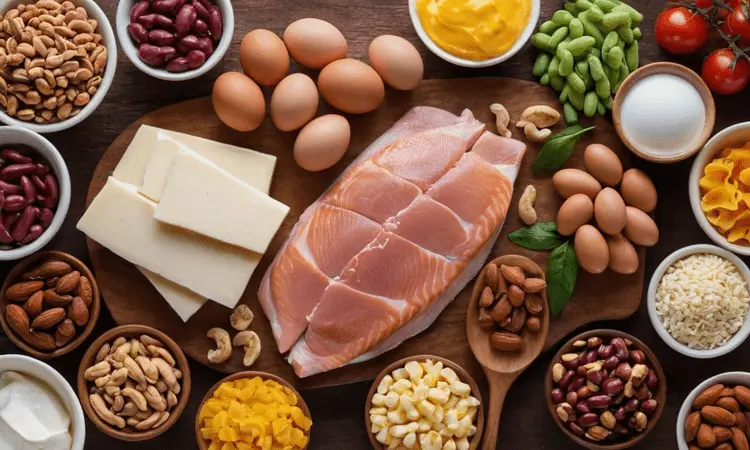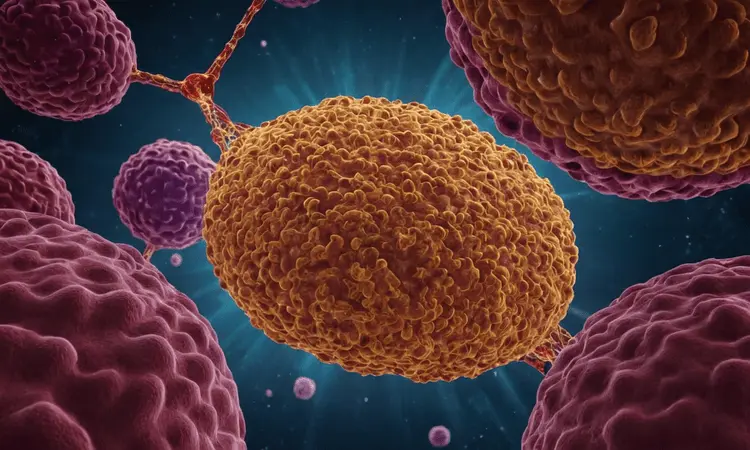Protein synthesis is the fascinating process your body uses to build everything from muscle fibers to enzymes. But how does it all work? If you’re struggling to reach your fitness goals, understanding this process could be the game-changer.
Decoding protein synthesis isn’t just for scientists. Whether you want to build muscle, boost recovery, or optimize your overall health, understanding how protein production works will empower you to make informed choices.
In this guide, we’ll break down protein synthesis step-by-step. You’ll discover how proteins are made, their role in muscle growth, and how to support this process through diet and lifestyle. Get ready to transform your understanding of how your body builds itself!
Protein Synthesis in a Nutshell
- DNA code makes RNA copy
- RNA carries code to ribosomes
- Ribosomes build proteins
- Proteins have many jobs
- Diet impacts protein synthesis
Understanding the Basics

Introduction
Have you ever wondered how your body creates the materials it needs to survive and thrive? It all starts with the amazing process of protein synthesis.
Proteins aren’t just what you find in a chicken breast – they’re the building blocks, the powerhouses, and the communicators within every cell. Let’s dive into the basics!
The Building Blocks of Proteins: Amino Acids
Think of proteins like long necklaces, and amino acids as the individual beads. There are 20 common amino acids your body can link together in countless combinations to make unique proteins.
Some amino acids your body can produce, others, called “essential” amino acids, need to come from your diet.
- Is variety important? Absolutely! Different amino acid combinations form proteins with wildly different shapes and functions.
Types of RNA
Protein synthesis isn’t a solo mission – it takes a team! Let’s meet the RNA players:
- Messenger RNA (mRNA): Carries the genetic recipe from your DNA.
- Transfer RNA (tRNA): Translates the code, bringing the right amino acids to the party.
- Ribosomal RNA (rRNA): Forms the core of ribosomes, the protein-making factories.
Think of it like a cookbook (DNA), a translator (tRNA), and a kitchen (ribosome) coming together to bake that delicious protein cake!
Let’s Get Social! Did this spark some questions? Leave a comment below or tag me on your favorite platform – let’s chat about protein synthesis!
Mastered protein synthesis? Discover how ‘incomplete proteins‘ impact your plant-based fitness goals. Read more: Incomplete Proteins: A Plant-Based Protein Guide
The Mechanisms of Protein Synthesis
Transcription: Copying the Code
Imagine your DNA as the ultimate cookbook, filled with recipes for all the proteins your body needs. Transcription is like carefully copying a specific recipe onto a notecard – that’s your mRNA! This process happens within the nucleus of your cell.
Let’s break it down:
- Initiation: A special enzyme, RNA polymerase, finds the right “recipe” (gene) in your DNA and binds to it, signaling it’s time to start transcribing.
- Elongation: RNA polymerase zips along the DNA strand, adding building blocks to create a complementary mRNA strand. Think of it like writing out that recipe one letter at a time.
- Termination: Finally, RNA polymerase reaches a “stop” signal. The mRNA transcript is done! But, in eukaryotic cells, there’s an extra step – RNA processing. Think of it as editing the recipe, cutting out unnecessary bits, and adding a protective “cap” and “tail” for its journey.
Translation: From RNA to Protein
Okay, we have our mRNA recipe – but how does your cell actually make the protein? That’s where translation, the next phase of this protein, takes place! It happens in the cytoplasm, on tiny protein-making factories called ribosomes.
Think of it like this:
- Initiation: The ribosome grabs onto the mRNA and finds the “start” signal (the start codon). Special transfer RNA (tRNA) molecules, each carrying a specific amino acid, come to the party.
- Elongation: Picture the ribosome as your chef! It matches tRNA anticodons to the mRNA codons, like matching puzzle pieces. Each tRNA drops off its amino acid, and the ribosome connects them, building a growing chain.
- Termination: A “stop” codon means the recipe is complete! The ribosome releases the finished protein.
But wait, there’s more!
- Proteins often go through folding and modifications after translation. This gives them their unique 3D shapes, crucial for their function.
Focus on Nutrition
Wondering how your diet plays into this protein? Amino acids, the building blocks of proteins, come from the protein-rich foods you eat. Make sure to include quality protein sources to support this vital process!
Beyond the Textbook Steps

Okay, we get the basics of protein synthesis: DNA makes RNA, RNA creates proteins. But what controls this whole process? How does your body know when and how much of each protein to build? Time to dive deeper!
The Master Switch: Regulating Protein Synthesis
Think of your cells as tiny factories. Protein synthesis isn’t just running wild! There’s a whole system of controls – like supervisors deciding what gets built and when. This regulation happens at several levels:
- Turning Genes On and Off: Special proteins called transcription factors tell your cell which sections of DNA to use for protein building.
- Controlling mRNA: Some mRNA messages are made to last longer than others, allowing for more or less protein to be produced.
Why is this regulation so important? Well, it’s what makes your muscle cells different from your skin cells, even though they have the same DNA!
Oops! When Protein Synthesis Goes Wrong
Imagine a factory blueprint with a typo in it. Mistakes in your DNA, called mutations, can garble the instructions for protein synthesis. Is there a problem? Sometimes these errors have no effect, but they can also lead to:
- Incorrect protein shapes: This messes up their function.
- Missing proteins: The cell may not produce vital proteins at all.
These protein synthesis errors are linked to numerous diseases. Understanding these flaws is a key area of medical research.
Protein Synthesis: It’s Not Just in Textbooks
Prokaryotes (like bacteria) and eukaryotes (that’s us!) both use protein synthesis, but there are distinctions. Bacteria get the job done with simpler machinery.
This difference is one reason why certain antibiotics can target bacteria without harming our own cells. You can explore topics related to protein synthesis for more on those fascinating distinctions.
Nutrition Connection: Fueling the Process
Ever wonder how the food you eat becomes you? this Protein is the answer! Since your body needs amino acids to build proteins, a balanced diet containing protein sources is essential.
Some foods are more protein-rich than others, making them valuable additions to your diet if muscle building or tissue repair is a priority.
Applications and Innovations
Think for a moment: what if the power of this protein could be harnessed? What if diseases could be treated by producing the correct proteins within the body?
What if materials stronger than steel could be spun from custom-designed proteins? Protein synthesis is already making this a reality. Let’s explore some groundbreaking applications!
Protein Synthesis in Medicine
The medical potential is huge! Imagine a world where diabetics no longer need insulin injections. Through recombinant DNA technology, human insulin is now produced within bacteria – a perfect example of this protein in action.
This field is exploding with possibilities like:
- Targeted therapies: Fighting diseases by delivering therapeutic proteins directly where they’re needed.
- Gene therapies: Working to correct the underlying genetic malfunctions that can lead to faulty protein synthesis.
Protein Synthesis in Biotechnology
Imagine enzymes that make laundry detergents eco-friendly, or biofuels derived from engineered organisms. This Protein is reshaping numerous industries. Researchers are:
- Designing bio-based materials: Think spider silk-like strength, spun by bacteria with tailored this protein abilities.
- Developing “green” solutions: This protein plays a key role in creating sustainable alternatives to traditional industrial processes.
The Future is Bright (and Protein-Based!)

The possibilities seem endless, don’t you agree? Protein synthesis is opening the door to advancements that were once considered science fiction.
Could personalized medicine, based on manipulating your own protein production pathways, become commonplace? Could we use protein synthesis to combat global challenges like pollution and resource depletion?
These exciting applications illustrate the immense impact this protein has on our lives, from curing diseases to revolutionizing industries.
If you want to explore more about the power of proteins, check out the incredible work of the National Human Genome Research Institute or dive into the science over at Nature Education: Scitable.
Let me know – what application of this protein are you most excited about? Share your thoughts in the comments or tag me on social media!
Get the science of protein synthesis? Now, learn how to fuel those gains with plant-based protein! Discover how to optimize your diet and build muscle on a plant-based plan. Read more: How to Get Enough Protein on a Plant-based Diet
FAQs: Protein Synthesis and Your Body
DNA unzips.
DNA code is copied to mRNA.
mRNA takes the code to the ribosome.
Ribosome builds the protein.
Protein folds into its shape.
Transcription:
DNA unzips.
DNA is copied to mRNA.
mRNA exits the nucleus.
Translation: 4. Ribosome builds the protein. 5. Protein folds. 6. Protein is released.
Yes! It’s the process that repairs and strengthens muscle fibers after you work out.
To protect the DNA in the nucleus, while proteins are built outside in the cytoplasm.
Yes! Aim for high-quality protein sources like lean meats, fish, eggs, dairy, beans, and whole grains.
Signals from hormones, growth factors, and the nutrients you eat all tell your body to ramp up or slow down protein production.
Absolutely! Protein synthesis is how your body repairs and builds those muscle fibers after a workout.
Focus on whole foods and limit sugary drinks and refined carbohydrates, as they can disrupt your body’s balance.
Yes! Protein boosts metabolism and helps you feel full, which can support weight loss goals